10 chairs that went down in history
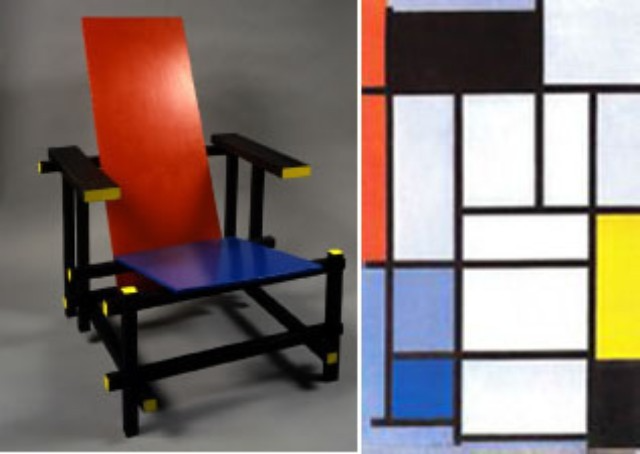
A chair is a fairly basic object in both form and function: it has a seat, four legs (generally speaking); a backrest that is set at a 90- or 100-degree angle to the seat; and sometimes two armrests.
The nature of a chair and its functions are so closely related to human needs that the names of its various parts, such as seat, armrests, and legs, correspond to the names of the human torso.
Perhaps it is for this reason that designers and architects seem to have an endless fascination with chairs. Historically, chairs have changed in style depending on the prevailing tastes of the time. Until the Renaissance, chairs were a symbol of social status and a sign of authority. Although sofas have become more status-conscious since then, the value of chairs cannot be underestimated. These ten chairs have played a vital role in the history of design, and each one is associated with an important design keyword.
1
───────────
A symbol of nobility: the Chippendale chair
───────────
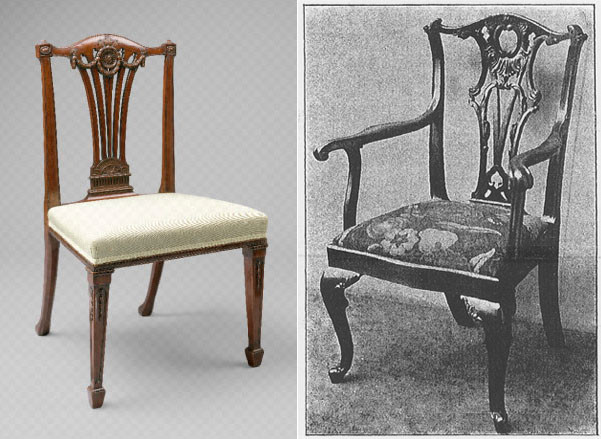
Chippendale Chair
From the 18th century to the 19th century and into the late 20th century, the chair has undergone many transformations. Born in 1718, Chippendale was the first famous furniture designer and maker, and the first to combine Eastern elements such as the pagoda and Suzhou gardens with Western furniture making techniques. His classic, French-influenced single chair has been imitated many times and is now one of the most conspicuous furniture in middle and upper class families. His chair perfectly combines the lightness of the Anne style with the elegance, comfort and delicate carving of the French Rococo sofa chair. These designs vary in style, from Rococo to Gothic to Chippendale. Today, the luxurious style of the Chippendale style has become a symbol of the upper class.


Chippendale furniture
2
────────────
Always imitated, never surpassed:
Sonnet Bent Wood Chair
────────────
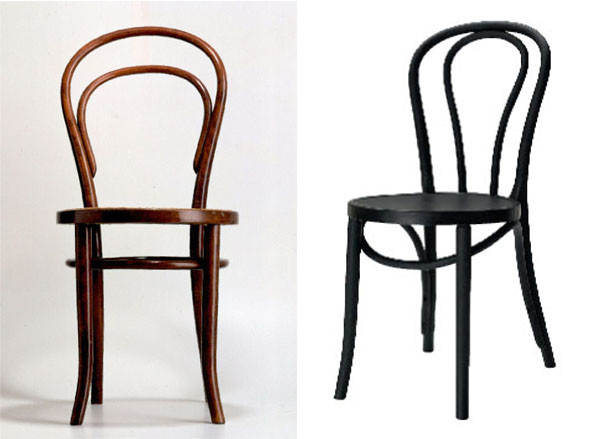
Sonnet bentwood chair (left), IKEA Ogra chair (right)
Designed by Michael Thornet in 1859, the Bentwood Chair No. 14 (also known as the Thornet Chair) is still in production today, renamed the Chair No. 214. It was the first chair to be mass-produced. The Thornet Chair is a simple and elegant design made up of only six parts (plus a few screws and nuts), and its design has remained unchanged for about 150 years, and it still retains the title of "standard chair".
"Nothing could be more elegantly conceived, better conceived, better worked, or more functional than this chair," said Le Corbusier, who himself owned several Sonnet chairs and placed them in various interiors.
The Sonnet bentwood chair transcends fashion and has many imitators, notably IKEA’s Ogra chair, which has been a fixture in the company’s production for more than 40 years. Japan’s MUJI recently teamed up with Sonnet to replicate the classic chair.

Replica Sonnet bentwood chair from MUJI
3
───────────
Mondrian-style seating: Red and Blue Chair
───────────
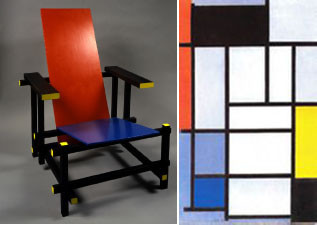
Red and blue chair (left), inspiration from Mondrian (right)
How many artists and designers did Mondrian influence? Although there is no accurate>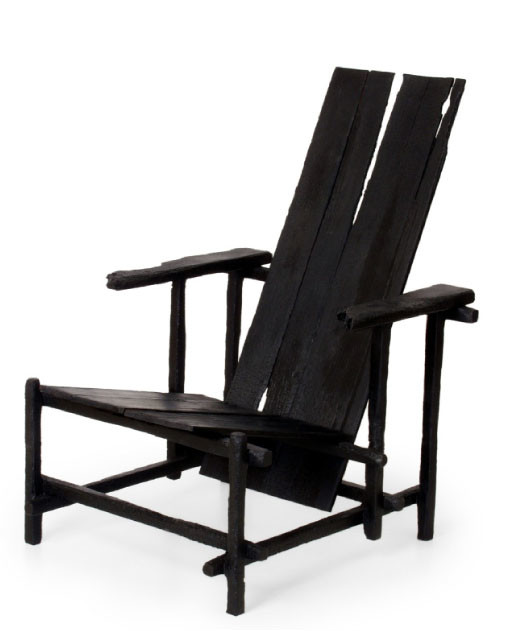
Smoking Rietveld Chair
4
─────────
The man's chair: Wassily chair
─────────
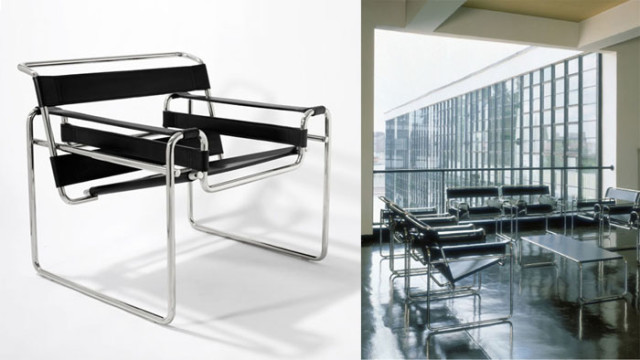
Wassily Chair (left),
Wassily Chair and Lacibiano Table (right) from the Bauhaus School
Inspired by the comfortable armchairs in men's clubs and the high strength and lightness of the curved steel handlebars on bicycles, the famous German designer Marcel Breuer created the armchair he called "Wassily" in 1925. It was named after his colleague at the Bauhaus, Wassily Kandinsky, and was the world's first tubular steel chair. This chair was placed together with Breuer's Lacio side table, which was often seen in the Bauhaus school in Dessau.
The "Wassily Chair" is a perfect interpretation of the Bauhaus creed "Cube is God". Due to its low-key and luxurious metal texture and simple and elegant design, this chair quickly became popular all over the world.

Italian designer Alessandro Mantini redesigned Breuer's "Wassily Chair", with its simple linear structure decorated with many interesting patterns.
5
────────────
The most practical and comfortable: wooden reclining chair
────────────

Wooden recliner
The wooden easy chair was a great breakthrough for the Eames couple in their search for furniture that was economical, comfortable and easy to mass-produce. The seat and backrest were made separately and supported by plywood. At the same time, the plywood legs and rubber anti-vibration seats also allowed the chair to bend backwards, tilt and stand steadily.

Metal Easy Chair (left), Lounge Chair 670 (right)
The metal easy chair had a matching table, and the plywood joints and legs of the LCW chair were replaced with metal, with self-aligning nylon pulleys. In 1956, the recliner 670 and ottoman 671 took seating comfort to a new level.

The Ant chair emulates the wooden easy chair
Danish designer Arno Jacobsen created the iconic Ant chair in the style of the Eameses. Compact, lightweight and stackable, the Ant chair soon began to appear in interiors around the world, and remains popular today.
6
────────
The beauty of lines: Butterfly Chair
────────

Butterfly Chair by Sori Yanagi
The son of Japanese folk art master Soetsu Yanagi, designer Sori Yanagi created this elegant chair with molded plywood in 1954. Because the shape is like a butterfly flapping its wings, it is named Butterfly Chair. In 1957, the Butterfly Chair won the "Golden Compass" award in Milan. Since then, Japanese design has emerged in the international design world and built a bridge between the East and the West. Like it, there is another elegant design recently that uses a piece of plywood in a creative way. This plywood folding chair designed by Lorenzo Marasio uses a continuous structure to create the chair, backrest and legs, and due to its special structure, the chair presents the beauty of winding lines.

Plywood folding chair by Lorenzo Marascio
7
──────────
Deceptive Chair: Tulip Chair
──────────

Eero Saarinen's Tulip Chair (1957) was one of the first chairs that didn't look like it was made of plastic. In fact, the base was also made of metal, but it was artistically combined with the plastic seat to give the impression of a material unity. Despite its "deceptive" nature, the Tulip Chair was still a surprisingly "modern" chair when it was first created, and has been regarded as one of the most iconic designs of the 20th century. The bright red cushions are polyurethane foam, which was first used in the residential sector in 1956. With this chair, Eero Saarinen tried to make the legs simpler, getting rid of the traditional four-leg structure, so that people sitting on it would have more room for their legs. At the same time, the designer also paid attention to the aesthetic design, and the shape of the chair resembles a romantic tulip, which also seems to resemble an elegant wine glass.
8
──────────
Plastic Pop: Blowing Chair
──────────

"Blowing" chair (also known as inflatable chair)
The inflatable “Blow” chair, designed by Depasse, Dubino and Romaz in 1967, is made of PVC material welded by high-frequency electrons and given various colors by the Italian company, Zanotta: an “anti-design” chair inspired by the Pop Art movement that can be placed both indoors and outdoors.
9
───────────
Tribute to the literary giant: Proust Chair
───────────

Proust Chair
In the Proust Chair, designed in homage to Marcel Proust, Mantini appropriated a prefabricated 18th-century armchair and printed the fabric and wood coverings with motifs from the paintings of the impressionist pointillist painter Paul Signac, thereby, as he put it, "dissolving the form into a nebula." His intention was to "produce culturally rooted objects" (such as this kitschy, mass-produced faux antique chair) based on the fake.
This Proust chair is known as one of the most extreme works of postmodernism in Italy. I wonder if Proust would sit on this chair if he were still alive... He would probably be so angry that he would go back to his coffin.

Mantini recently gave the Proust chair a new look
10
──────────
Hey chair, become a bookshelf!
──────────

Entering a new era of design, the function of chairs is no longer just "sitting". The invention of multifunctional chairs allows people to see the direction of future seating design. In 2005, Dutch designer Matt Bass collaborated with the radical Dutch design group Droog (Dry in Dutch) to launch the "Hi, Chair, Become a Bookshelf" series, which is a typical Bass-style, challenging design that makes people linger.
Each design in the series is a seemingly random aggregation of familiar household objects such as chairs, lampshades, violins, and coat racks, all of which are second-hand. The designer reinforced the above objects with polyester fiber and wrapped them with a layer of polyurethane. In fact, this work aims to question the conventional idea that all products have a unique function and even a unique way of use. In Bass's work, the chair can be a bookshelf, a lampshade, or even a vase.